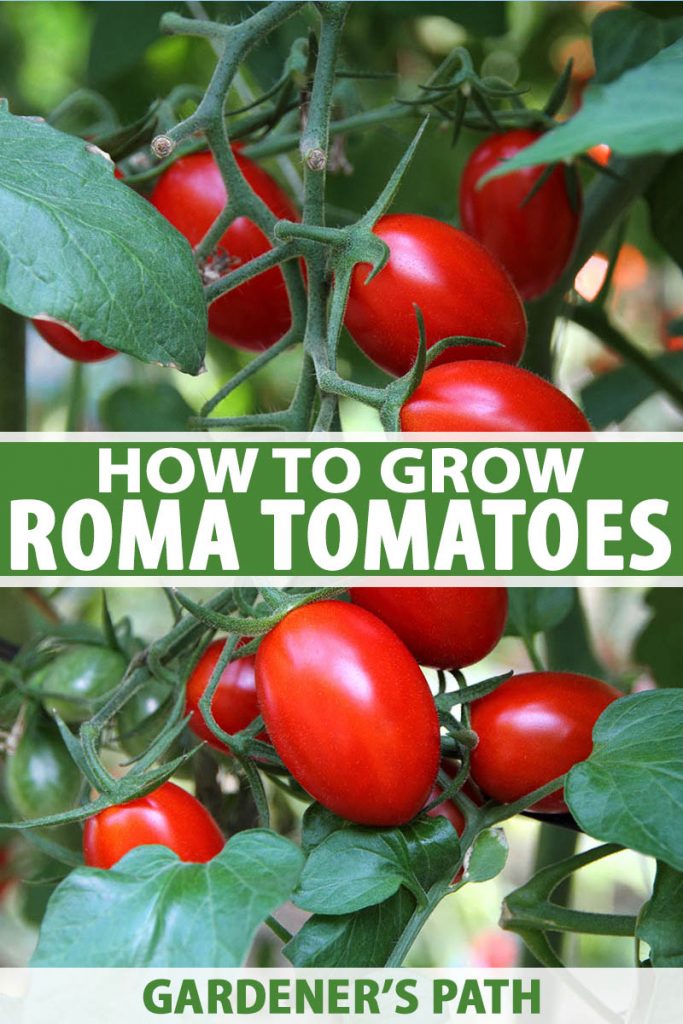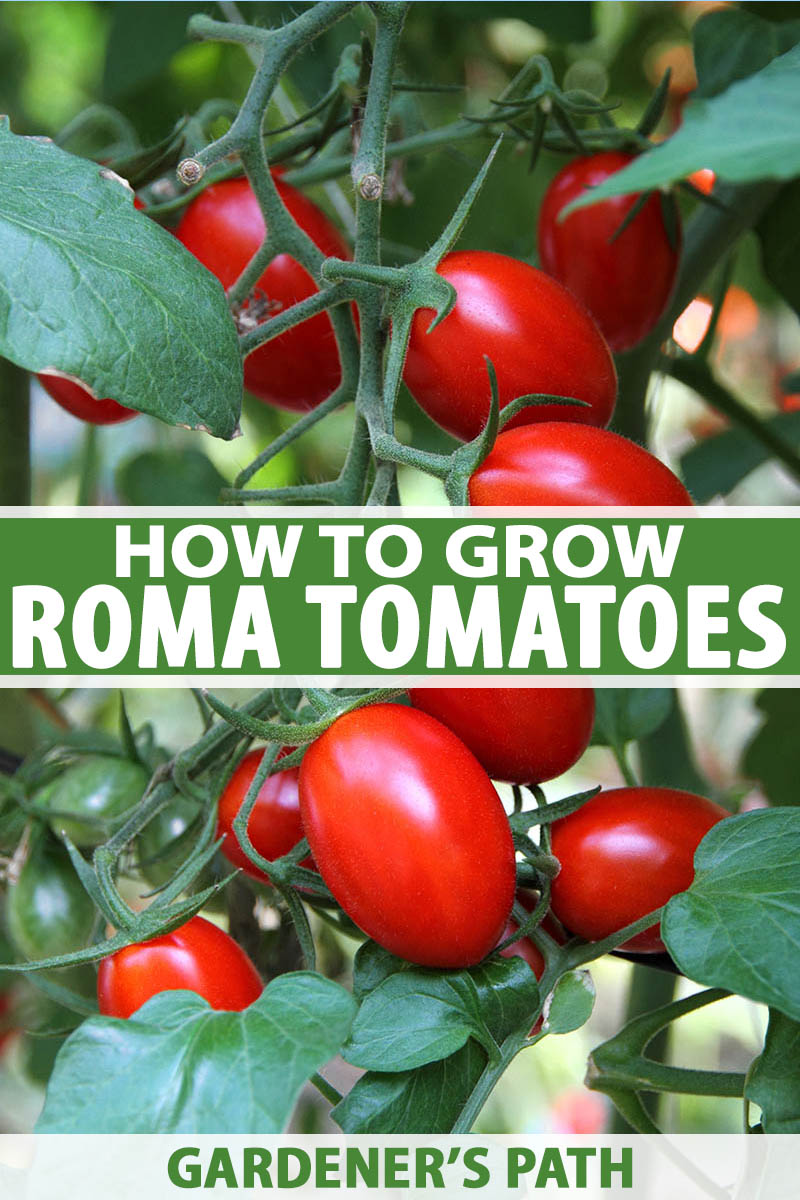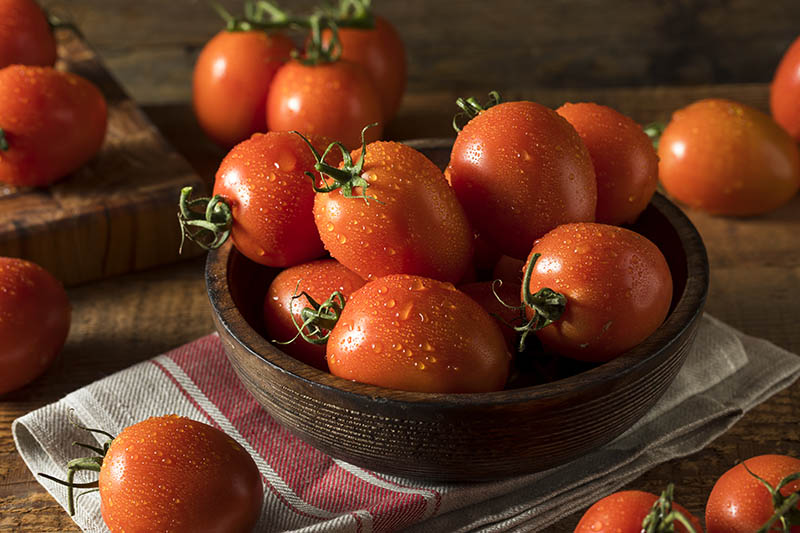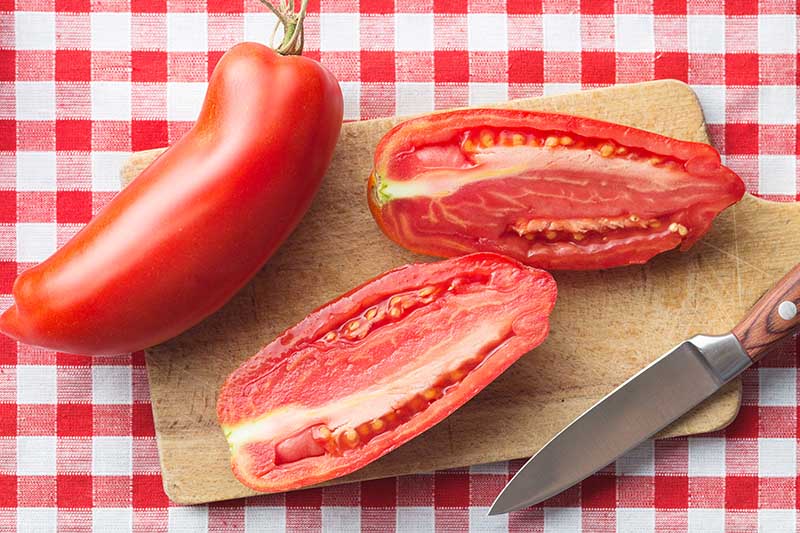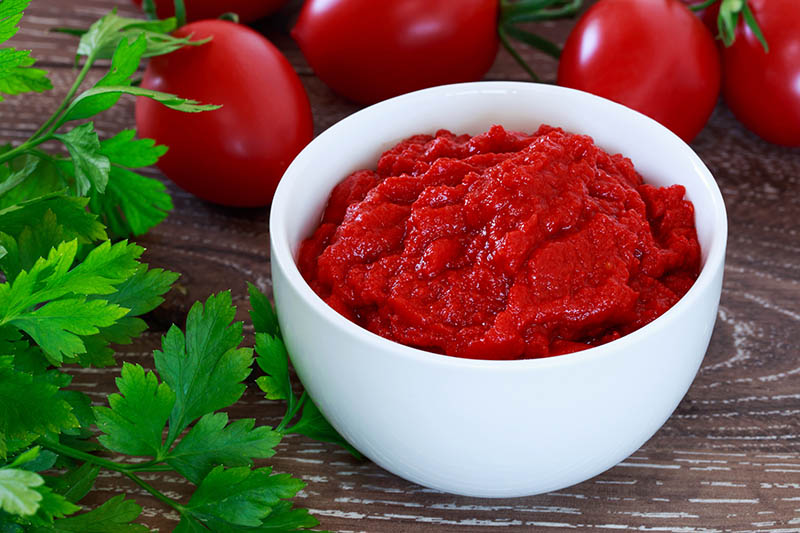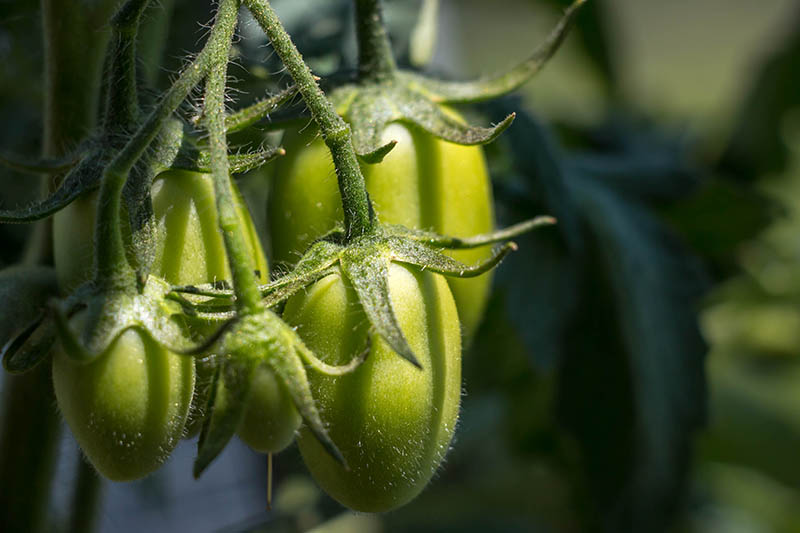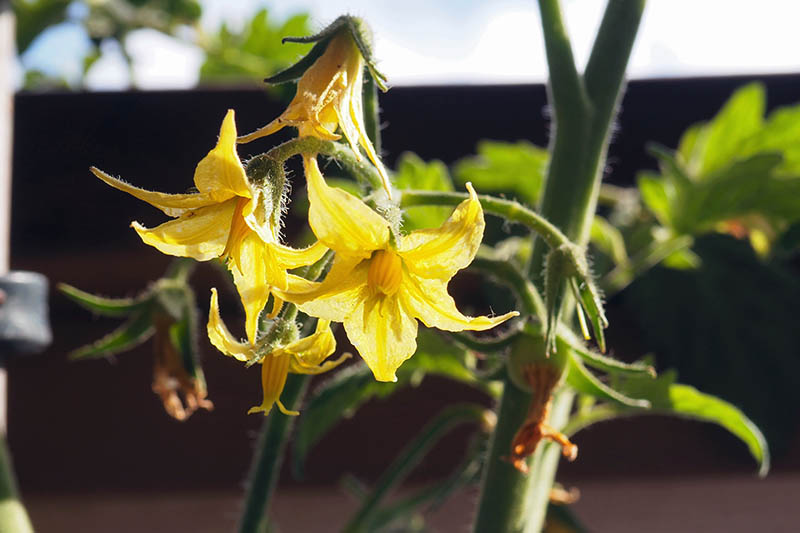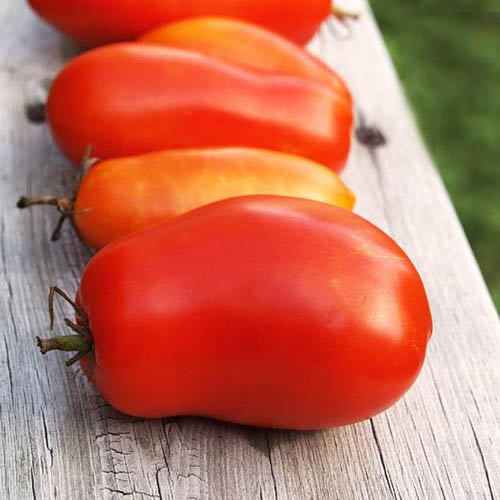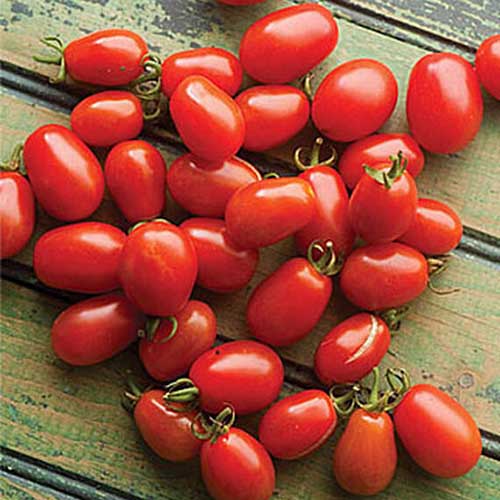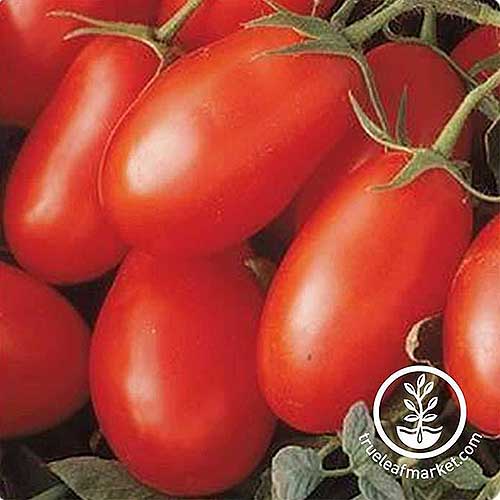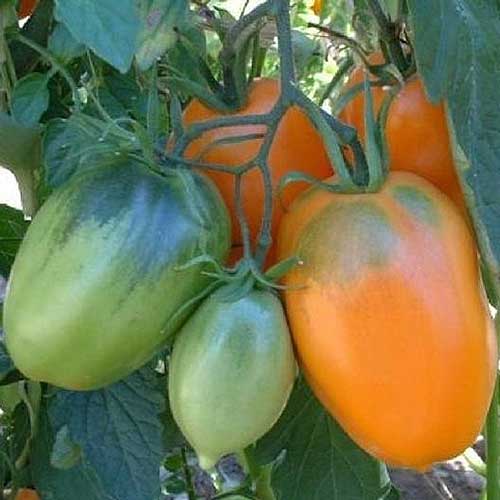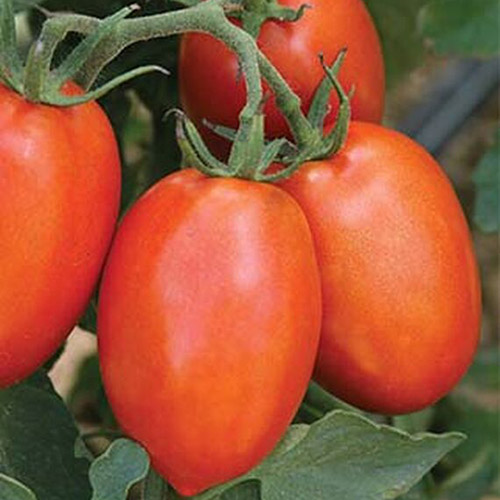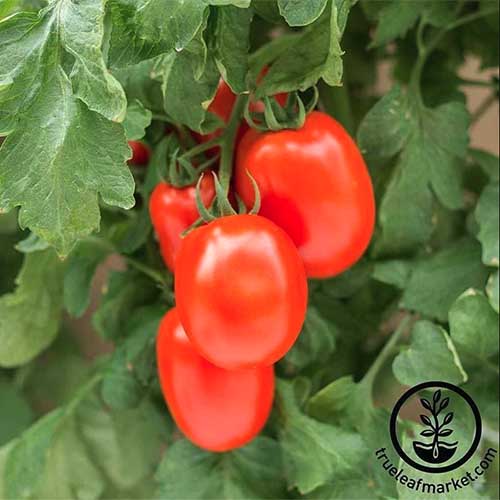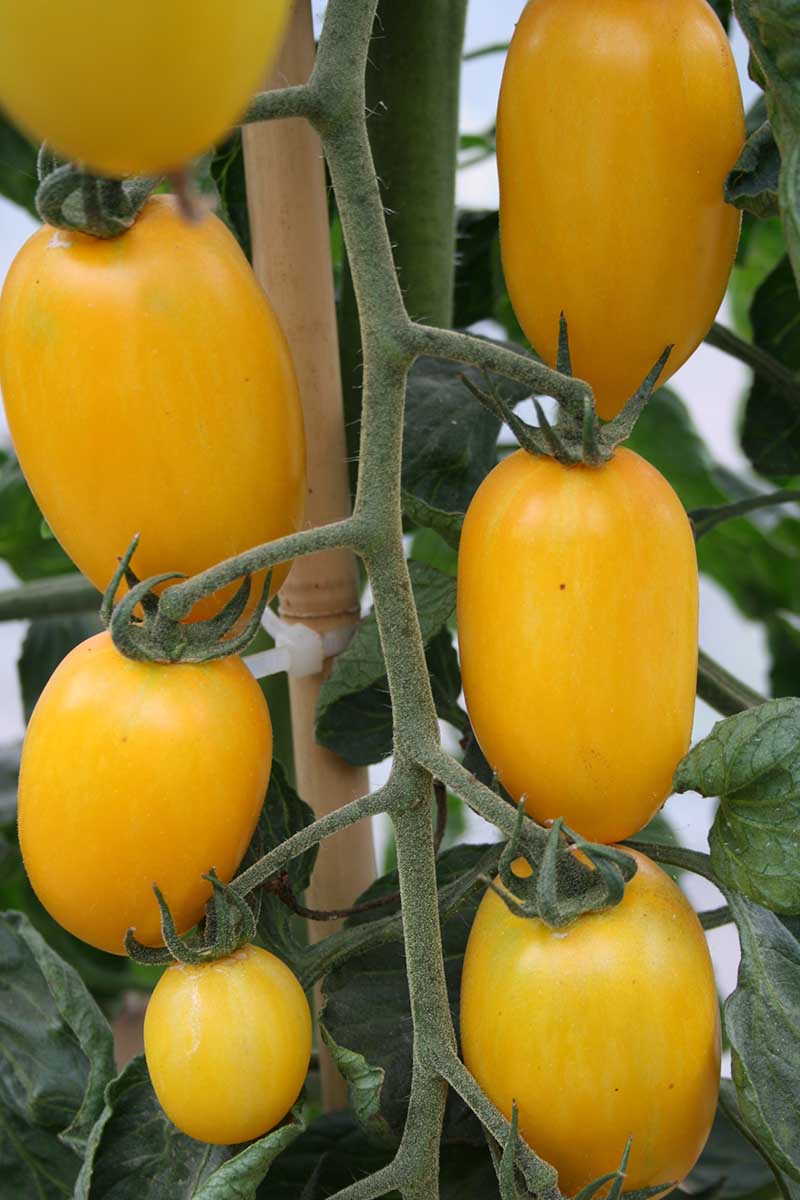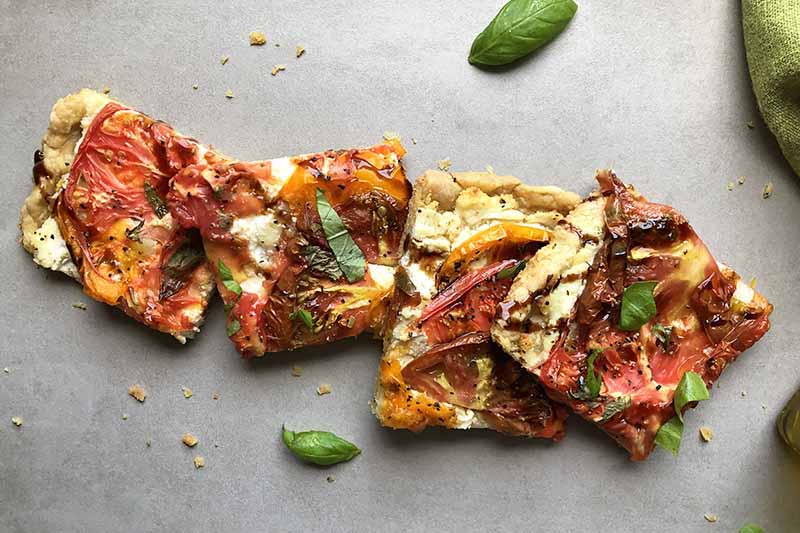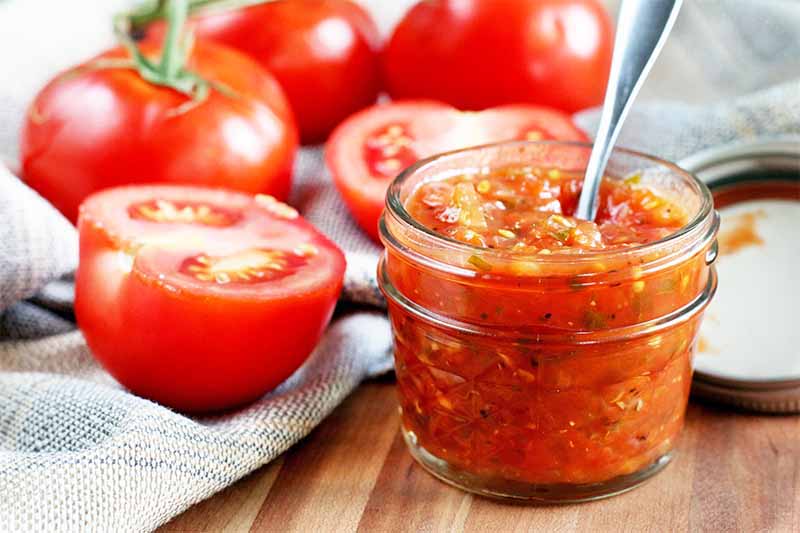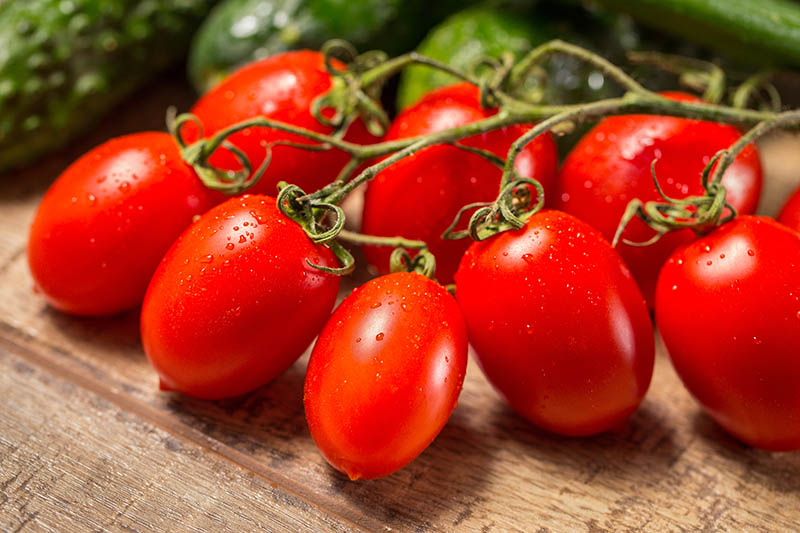As low-moisture paste tomatoes, their flavor intensifies with heat, making them a top choice for cooking. The dense, gel-less texture holds up magnificently on the grill, sun-dried, or roasted. Along with the fantastic taste, texture, and low moisture, they have few seeds – all of which make them highly popular with the canning crowd. They are the perfect tomatoes for creating zesty ketchups, salsas, sauces, pastes, purees, and relish. We link to vendors to help you find relevant products. If you buy from one of our links, we may earn a commission. Or simply toss them with fresh basil and olive oil. Plus, the fruit freezes well for a tasty addition to sauces, soups, and stews throughout the year. ‘Romas’ grow on vigorous plants with a heavy yield and thrive in sunny raised beds, containers, and vegetable plots.
Fast-growing and easy to cultivate, you won’t want to miss out on adding these tasty and versatile plants to your own garden. Here’s what I’ll cover:
What Is a Roma Tomato?
Although distinctly Italian sounding, ‘Roma’ is actually an American hybrid.
We can thank the USDA’s Agricultural Research Service for creating the first ‘Roma’ hybrid in 1955. But it does have Italian parentage, being a cross of the famous and flavorful ‘San Marzano’ – an open-pollinated heirloom cultivar native to the volcanic soil in the region around Mount Vesuvius – and ‘Pan America.’ You may see ‘Roma’ referred to as Italian or Italian plum tomato, and the name is commonly used as a generic term to describe a paste tomato. An early variety, ‘Roma VF,’ was bred in 1963 for its resistance to both verticillium and fusarium wilt. As a result, most cultivars – including those now classified as heirlooms – have the same resistance, thanks to this early breeding. The bright red, rose, or yellow fruits are oblong, with an egg or pear shape, and typically measure two to four inches long. Plants can be determinate or indeterminate and produce ample clusters of fruit that may require cages, stakes, or trellises to provide support for heavily laden branches.
When eaten fresh, these tomatoes have complex flavors that are both sweet and tangy. But the fullest flavors emerge with cooking, where they deepen and intensify – they’re perfect on the grill, roasted, or slow cooked.
Starting from Seed
All tomatoes need a long growing season. Seeds are best started indoors six to eight weeks before the last frost date for your region.
If you’re new to seed propagation, this guide has all the details you need on how to grow tomatoes from seed in six easy steps. Once seedlings grow to about six inches tall, you can begin to harden them off in preparation for planting outdoors. Or if you prefer, wait until your local garden center is stocked with seedlings to choose from.
Growing Tips
‘Romas’ are naturally robust and hearty plants, but there are a few things that will help ensure a bumper harvest!
Harden off seedlings gradually, and only transplant outdoors when nighttime temperatures no longer drop below 50°F.
Use a cloche or plant cover if cold, wet, or windy conditions set in.
The ideal soil pH level for healthy growth is between 6.2 and 6.5.
Adding lime or Epsom salts to the planting hole helps with calcium uptake and aids in the prevention of future problems like blossom end rot.
When planting, install cages or stakes for support to prevent root disturbance later on.
Plants require between six and eight hours of full sunlight each day.
To prevent problems like blossom end rot and split skins, water plants deeply once a week instead of providing more frequent shallow watering. The entire root ball, including the lowest roots, need to have a drink – not just the surface ones.
At planting, pinch off the lowest two sets of branches and bury the stem close to the lowest remaining stems. This helps to promote more root growth.
Pinch out suckers as they appear. Suckers are the small secondary branches that appear in the “V” between main branches and the stem. Removing them directs energy into fruit production.
Once flowers begin to set, feed every two weeks with a balanced fertilizer, or use a tomato formula of 18-18-21 (NPK).
For container growth, use a loose potting mix enriched with organic materials like compost or aged manure and amended with water-retaining materials such as coconut coir, peat moss, or vermiculite.
Container plants typically require more frequent feeding and can be given a half-strength solution of fertilizer every week if needed.
Container plants often need more frequent watering as well. When the top inch of soil is dry, water slowly and deeply. This allows the soil to absorb the moisture and not flood out the drainage holes.
To help retain moisture and keep weeds down, add a natural mulch of grass clippings, leaf mold, or straw.
Fruits typically ripen in 70 to 80 days.
For detailed growing information, refer to our guide on how to grow and care for tomatoes. It covers how-to-grow steps, managing pests and diseases, and much more! Our guide to growing in containers will cover specifics suited to that method, for patio growers and other small space gardeners.
Cultivars to Select
For fresh eating or to put up preserves, there are several outstanding varieties for your consideration.
‘Roma’ You can find seeds for the classic heirloom ‘Roma’ cultivar available at Eden Brothers. Or if you want to try something a little bit different, here are a few of the most popular cultivars:
Cherry Roma (Heirloom)
A mini cultivar, ‘Cherry Roma’ produces an abundance of small one-ounce fruits with an intense, fresh flavor that’s both sweet and tangy. Ideal for an instant snack, the firm fruit is perfect to chop up for bruschetta or tossed into a salad with fresh basil.
‘Cherry Roma’ The indeterminate plants grow 36 to 40 inches and fruits mature in 75 to 80 days. Seed packets are available at Burpee.
La Roma III (Hybrid)
This hybrid cultivar produces a large crop of five-ounce, bright red fruits on vigorous, determinate vines. Firm-fleshed and tasty, they are perfect for canning, sauces, and paste.
‘La Roma III’ Highly disease resistant, these vigorous plants will require caging or other support. You can find seeds available at True Leaf Market.
Orange Roma (Heirloom)
With a rich, sweet flavor and orange skin and flesh, these two-ounce fruits grow abundantly on vigorous, indeterminate vines. They’re ideal for adding a splash of color to summer salads, and the firm flesh is perfect for salsa and sauce.
‘Orange Roma’ Fruits mature in 75 days. You can find packets of seeds in a variety of sizes available at Eden Brothers.
Roma Grande (Hybrid)
These vigorous plants are one of the best for extreme temperatures, both hot and cold. ‘Roma Grande’ (aka ‘Rio Grande’) features an abundance of bright red pear-shaped fruits with a full flavor that’s both acidic and sweet. The four-ounce fruits are firm and meaty, ideal for juicing, paste, and sauces.
‘Roma Grande’ The determinate plants grow 15 to 24 inches and are very productive. Caging is recommended to support vines laden with fruit. Fruits ripen in 75 to 85 days and plants are heavily disease resistant. Seeds are available at Burpee.
Roma VF (Heirloom)
The first cultivar, ‘Roma VF’ is a vigorous plant with abundant yields of bright red and mild tasting two-ounce fruits. An excellent variety for ketchup, puree, and sauces, the determinate vines grow 30 to 36 inches and fruit matures in 76 days.
‘Roma VF’ Plants are resistant to verticillium wilt and fusarium wilt. Seeds are available at True Leaf Market.
Yellow Roma
Golden-yellow fruits add a punch of color to the garden – and the salad bowl. Firm flesh with a low acid and sugar content has a subtly sweet flavor that is enhanced by cooking. Determinate vines produce an abundance of one to two-ounce fruits, and grow to a mature size of 40 inches.
Recipe Ideas
Cooking really brings out the rich, complex flavors of ‘Roma’ tomatoes, and they make a great addition to many recipes. Here are a few ideas to try out this summer. You can’t go wrong with bruschetta. For a balanced flavor and great texture, try your freshly harvested ‘Roma’ in this sumptuous homemade tomato basil bruschetta – you can find the recipe at Foodal, our sister site. For a zesty appetizer or entree, this einkorn pastry with tomato, ricotta, and basil is ideal for a rich, delicious flavor your guests will love. The recipe’s at Foodal. And for those who like a relish with a tangy bite, try them in a sweet and savory tomato jam. I love their rich taste and always add in a big handful of fresh basil and parsley along with some diced and sauteed celery and onion.
Quick Reference Growing Guide
Plum Perfect for Stocking the Pantry
With their rich taste, meaty texture, and low seed count, everything about ‘Roma’ conspires to make it plum perfect for stocking the pantry – and for fresh eating!
Use them to create juice, ketchup, or the perfect pasta sauce. And if you can’t keep up with the harvest, pop them whole into the freezer and make your sauce later. Are you growing ‘Roma’ tomatoes? Drop us a note in the comments below. And if you want to learn more about different tomato varieties to grow in your garden, check out these guides next:
15 of the Best Canning Tomatoes You Should Grow 21 of the Best Heirloom Tomato Varieties for the Garden 17 of the Best Cherry Tomatoes to Plant in Your Garden
Photos by Fanny Slater, Lorna Kring, and Meghan Yager © Ask the Experts, LLC. ALL RIGHTS RESERVED. See our TOS for more details. Product photos via Burpee, Eden Brothers, and True Leaf Market. Uncredited photos: Shutterstock.
